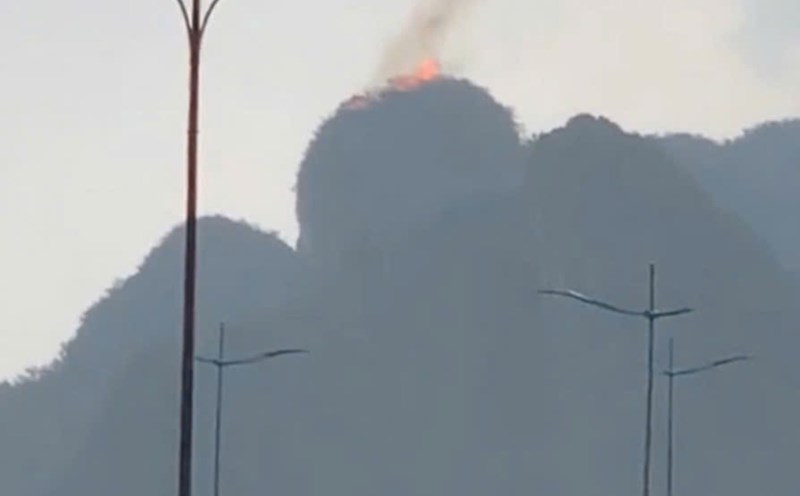The Ministry of Agriculture and Environment has just sent a telegram to the People's Committees of provinces and cities in the Northern and coastal regions from Quang Ninh to Dak Lak and relevant ministries on responding to storms in the East Sea.
The dispatch clearly stated that on the morning of July 19, storm WIPHA entered the East Sea and became storm No. 3 with an intensity of level 9, gusting to level 12; the storm is forecast to continue to strengthen and is likely to affect, causing heavy rain in the Northern region in the coming days.
To proactively respond to storms and the risk of heavy rain, floods, inundation, flash floods, and landslides, the Ministry of Agriculture and Environment recommends:
For the sea route from Quang Ninh to Dak Lak
Closely monitor the development of the storm; strictly manage vehicles going out to sea; organize counting, notify owners of vehicles, captains of ships and boats operating at sea of the location, direction of movement and developments of the storm to proactively avoid, escape, not move into dangerous areas or return to safe shelters. Dangerous area in the next 24 hours: From 18.0 degrees North latitude, east of 114.5 degrees East longitude (dangerous area adjusted in forecast bulletins);
Deploy the work of ensuring the safety of people, vehicles, and property, especially for tourist attractions, aquaculture, fishing, seafood, and works at sea, on islands, and coastal areas;
Based on specific situations, proactively decide to ban fishing vessels, transport vessels, tourist vessels and relocate people in cages and aquaculture hutes along the coast, at sea and on islands to ensure safety;
Prepare forces and means for rescue when required.
For the mainland of the Northern and North Central regions:
a) For the plains:
Review and be ready to evacuate people from unsafe houses, areas at risk of deep flooding, river mouths, and coastal areas;
Direct the work of ensuring the safety of sea dykes and river dykes, especially in vulnerable locations or under construction;
Proactively drain buffer and flood water to protect agricultural production, urban areas and industrial parks at risk of flooding;
Organize tree pruning; tie and reinforce signs, houses, public works, industrial parks, factories, warehouses, and projects under construction. Check, review, take measures to ensure the safety of telecommunications systems and power grid systems to maintain operations, without interruption before, during and after the storm;
Proactively organize the harvest of agricultural products and aquaculture areas according to the motto "greener at home than in the fields".
b) For mountainous areas:
Deploy shock forces to inspect and review residential areas along rivers, streams, low-lying areas, areas at risk of flooding, flash floods, and landslides to proactively clear the flow in blocked and congested areas; organize the relocation and evacuation of people to safe places; direct commune-level authorities to notify each household living in areas at risk of landslides and flash floods to inspect and review around their residence to promptly detect unusual and dangerous signs to proactively evacuate from dangerous areas;
Prepare plans to organize forces to guard, control, support, and guide to ensure safe traffic for people and vehicles, especially in culverts, spillways, areas with deep flooding, fast-flowing water, areas where landslides have occurred or are at risk of landslides; resolutely not allowing people and vehicles to pass if safety is not guaranteed; arrange forces, materials, and means to overcome incidents, ensuring smooth traffic on main traffic routes when landslides occur;
Direct inspection, review, and preparation of plans to ensure the safety of mines, mineral mines, reservoirs and downstream areas, especially small hydropower reservoirs, small irrigation reservoirs, and volunteer reservoirs; arrange standing forces to operate and regulate and be ready to handle possible situations.











